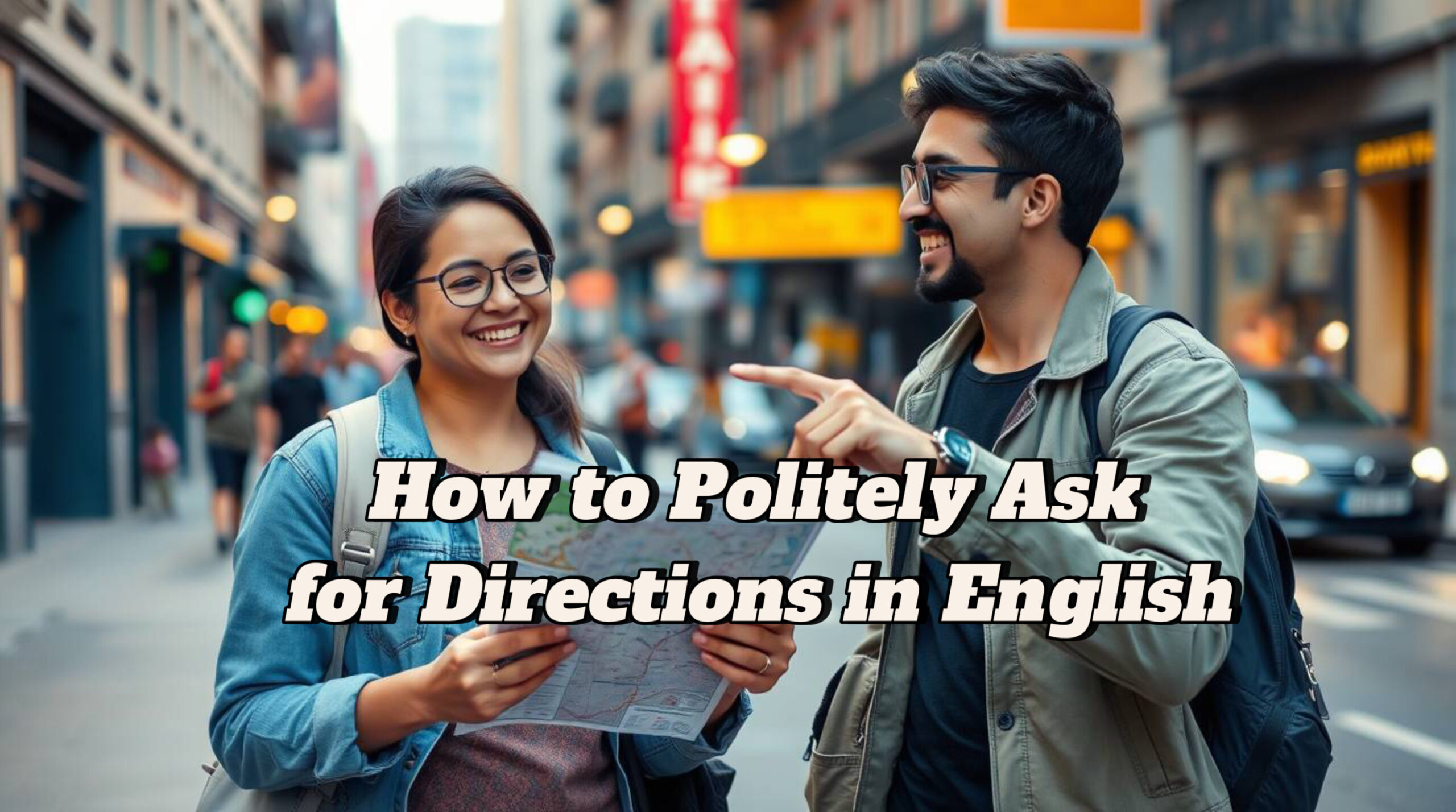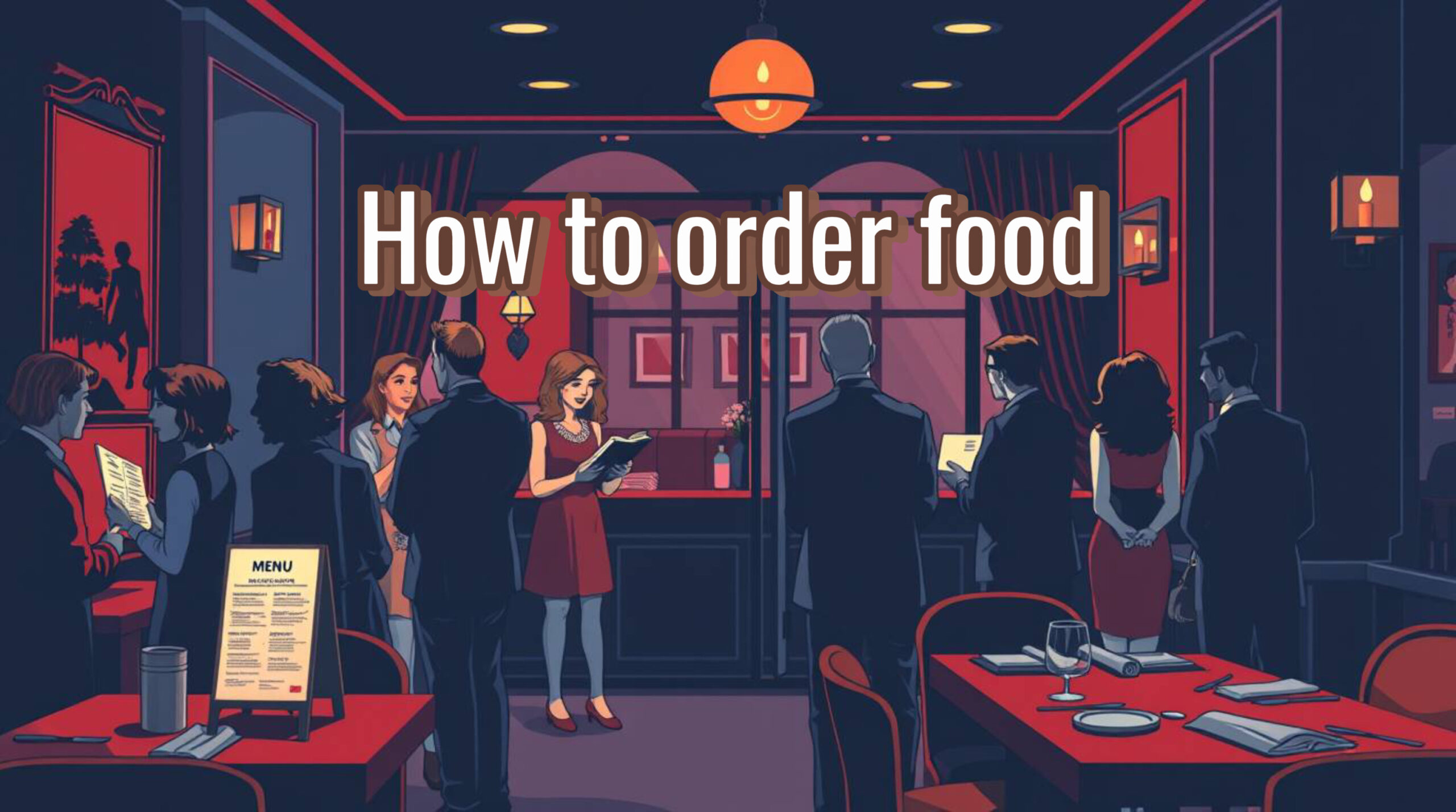Introduction
Asking for directions is one of the most practical skills you can learn when traveling or navigating a new place. Whether you’re visiting an English-speaking country or simply trying to find your way around a city, knowing how to ask for directions politely is essential. For beginners at the A1 level, this guide will teach you simple phrases and strategies to communicate effectively and confidently. By the end of this post, you’ll be able to ask for directions clearly, understand responses, and navigate with ease.

Why Is It Important to Ask Politely?
In English-speaking cultures, politeness plays a big role in communication. When asking for directions, being polite makes people more willing to help you. Politeness also shows respect and gratitude, which can leave a positive impression. Even if you’re unsure about grammar or pronunciation, using polite phrases can make your request easier to understand and more pleasant for the listener.
Basic Structure for Asking Directions
When asking for directions, it’s helpful to follow a simple structure:
- Start with a polite greeting.
- Use a polite phrase to ask for help.
- Specify where you want to go.
- Thank the person for their assistance.
Let’s break each step down further.
Step 1: Start with a Polite Greeting
A friendly greeting sets the tone for your interaction. Here are some common greetings you can use:
– “Excuse me.”
– “Hello.”
– “Hi, sorry to bother you.”
These phrases signal that you’re about to ask something and show respect for the other person’s time.
Step 2: Use a Polite Phrase to Ask for Help
After greeting someone, use a polite phrase to introduce your question. These phrases sound respectful and make your request clear:
– “Could you help me, please?”
– “Can you tell me how to get to…?”
– “Do you know where… is?”
– “Would you mind showing me…?”
For example:
– “Excuse me, could you help me, please?”
– “Hi, do you know where the train station is?”
Step 3: Specify Where You Want to Go
Clearly state your destination so the person understands what you’re looking for. Be as specific as possible. For example:
– “I’m looking for the nearest bus stop.”
– “Can you tell me how to get to the museum?”
– “Where is the closest supermarket?”
If you’re unsure of the exact name, describe the place:
– “I’m trying to find a café near here.”
– “Is there a pharmacy nearby?”
Step 4: Thank the Person for Their Assistance
Always thank the person after they’ve helped you. This shows appreciation and leaves a positive impression. Common phrases include:
– “Thank you so much!”
– “Thanks for your help!”
– “I really appreciate it!”
For example:
– “Thank you so much! Have a great day!”
– “Thanks for your help. You’ve been very kind!”

10 Polite Phrases for Asking Directions
Here are ten easy-to-remember phrases perfect for A1 learners:
- “Excuse me, could you tell me how to get to the park?”
– Example Response: “Sure, go straight ahead and turn left at the traffic lights.”
- “Hi, do you know where the nearest bank is?”
– Example Response: “Yes, it’s just two blocks away on Main Street.”
- “Sorry to bother you, but can you help me find the train station?”
– Example Response: “Of course! Walk down this street and take the second right.”
- “Excuse me, I’m looking for the library. Do you know where it is?”
– Example Response: “It’s next to the post office, about five minutes from here.”
- “Hello, could you show me where the restroom is, please?”
– Example Response: “Sure, it’s upstairs, on the first floor.”
- “Can you tell me the way to the airport, please?”
– Example Response: “Take the bus number 15 from the station—it goes directly there.”
- “Do you know if there’s a café around here?”
– Example Response: “Yes, there’s one just across the street.”
- “Would you mind telling me where the hotel is?”
– Example Response: “No problem. Keep walking until you see the big sign.”
- “Excuse me, is there a pharmacy nearby?”
– Example Response: “Yes, it’s about three minutes’ walk from here.”
- “Could you help me find the bus stop, please?”
– Example Response: “Of course! It’s right behind you, near the corner.”

Common Responses to Listen For
When someone gives you directions, they might use these phrases. Familiarize yourself with them to understand their response better:
– “Go straight ahead.” – Continue walking forward.
– “Turn left/right.” – Change direction at the next intersection.
– “It’s on your left/right.” – The place is located on one side of the street.
– “Take the first/second/third street.” – Count the streets before turning.
– “It’s next to/near/opposite…” – The location is close to another landmark.
– “You can’t miss it.” – The place is easy to find.
For example:
– “Go straight for two blocks, then turn right. The restaurant is on your left.”

Tips for Understanding Directions
Sometimes, understanding spoken directions can be challenging, especially for beginners. Here are some tips to make it easier:
- Ask Them to Speak Slowly: If someone speaks too fast, politely say:
– “Could you please speak more slowly?”
– “Sorry, could you repeat that?”
- Repeat What They Say: Repeat their instructions to confirm you understood correctly:
– “So, I should go straight and then turn left, right?”
- Use Gestures: Point or nod to clarify directions.
- Write It Down: If possible, jot down key details like street names or landmarks.
Practice Scenarios
Let’s practice with some real-life examples. Imagine you’re in different situations—how would you ask for directions?
Scenario 1: Finding a Restaurant
You’re hungry and want to find a restaurant called “The Green Table.” How would you ask?
– “Excuse me, do you know where The Green Table is?”
Scenario 2: Locating a Landmark
You’re sightseeing and want to visit the Statue of Liberty. What would you say?
– “Hi, could you tell me how to get to the Statue of Liberty, please?”
Scenario 3: Asking About Public Transport
You need to catch a bus to downtown. How would you ask?
– “Excuse me, where is the nearest bus stop?”
Scenario 4: Looking for a Restroom
You’re in a shopping mall and need to find the restroom. What would you ask?
– “Hello, could you show me where the restroom is, please?”
Cultural Tips for Asking Directions
Different cultures have unique norms when it comes to asking for directions. In English-speaking countries, keep these tips in mind:
- Smile and Make Eye Contact: This shows friendliness and builds trust.
- Be Patient: Some people may not know the answer, and that’s okay.
- Avoid Interrupting: Wait until someone finishes speaking before responding.
- Show Gratitude: Always thank the person, even if they couldn’t help you.
Common Mistakes to Avoid
Even fluent speakers sometimes make mistakes when asking for directions. Watch out for these pitfalls:
- Speaking Too Fast: Take your time to pronounce words clearly.
- Using Complex Sentences: Stick to short, simple sentences for clarity.
- Forgetting to Be Polite: Always start with a polite phrase like “Excuse me” or “Sorry to bother you.”
- Not Listening Carefully: Pay attention to the response to avoid getting lost again.
Conclusion
Asking for directions in English doesn’t have to be stressful. With polite phrases, clear communication, and a bit of practice, you’ll feel confident navigating any situation. Remember to greet politely, specify your destination, and always thank the person for their help. Practice these phrases regularly, and soon you’ll be able to ask for directions like a pro!
Now that you’ve learned how to ask for directions, why not try it out today? Whether you’re exploring a new city or practicing with a friend, these skills will come in handy wherever you go.




